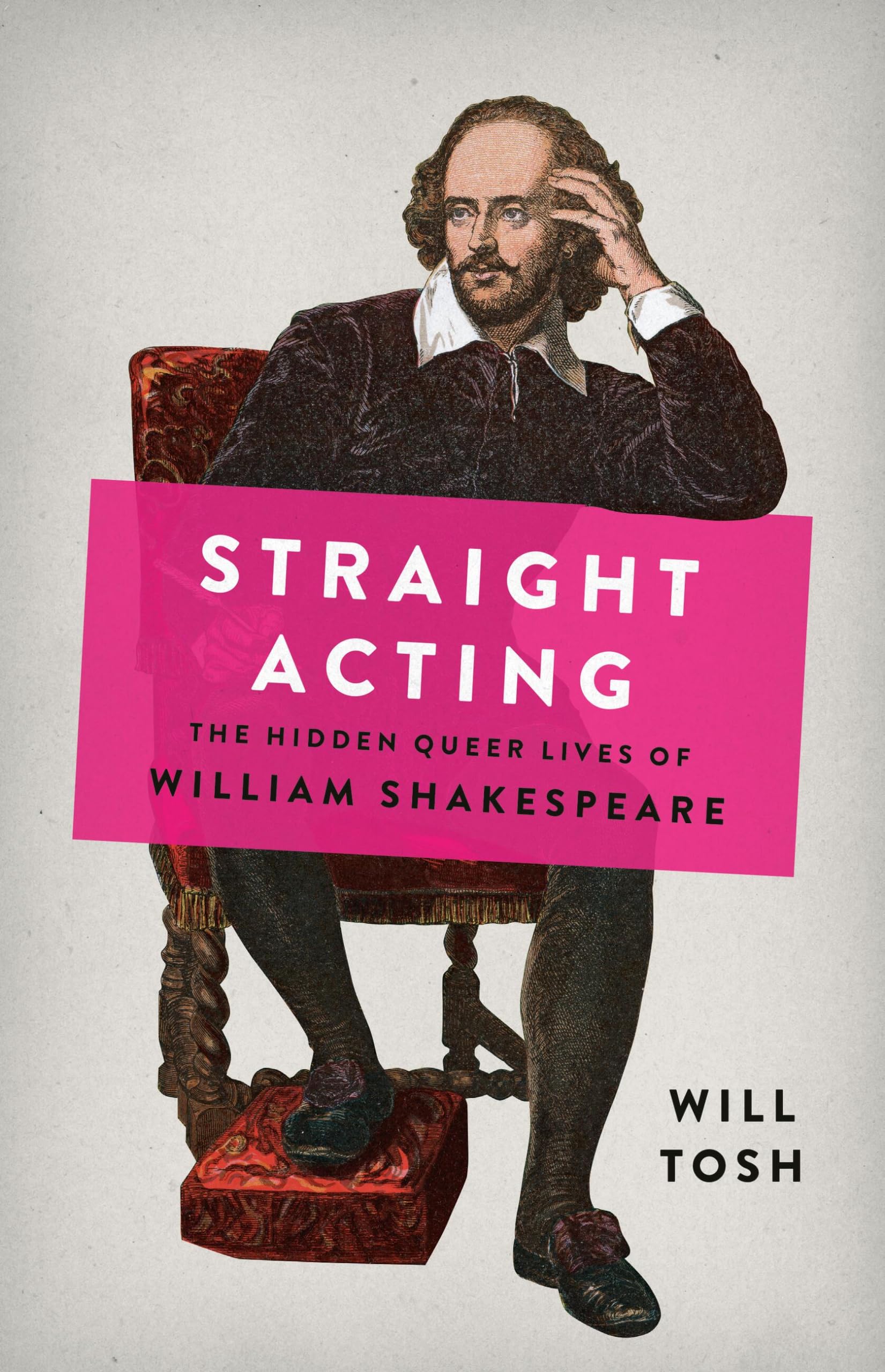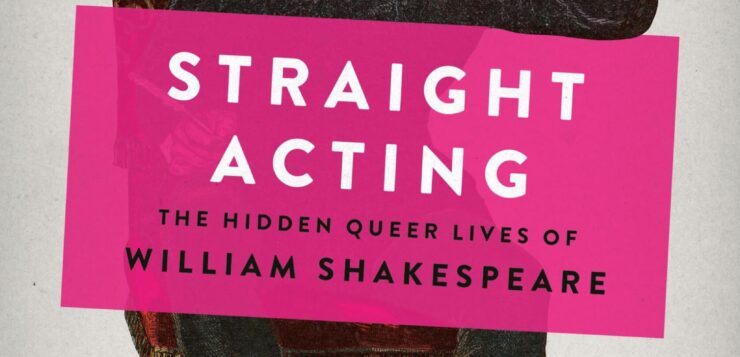
STRAIGHT ACTING
The Hidden Queer Lives of William Shakespeare
by Will Tosh
Seal Press. 304 pages, $30.
STRAIGHT ACTING is an engaging examination of the queer elements in Shakespeare’s time and how they influenced his work. Will Tosh, head of research at Shakespeare’s Globe in London, explores Shakespeare’s life and times to reveal the literary and real-life precedents for same-sex love that Shakespeare absorbed and used in his work. Tosh is less interested in proving that Shakespeare was gay than in showing that the Bard was deeply immersed in a theatrical world in which queerness was everywhere: in the Classical sources for drama, in the gender-bending tradition of all-male casts, and in the subculture of acting companies at this time.
Elizabethan England was a strange place to be gay. While the state officially condemned homosexuality, very few men were actually prosecuted for it, as multiple witnesses were required. And the culture itself offered many opportunities to read about and experience same-sex desires. Shakespeare’s grammar school in Stratford taught him Latin and exposed him to Classical texts like Cicero’s De amicitia and Ovid’s Metamorphoses that speak of queer love. Cicero argues for the importance of  “intense male friendships” in society, describing this relationship as that of “soulmates.” Ovid’s mythical transformations often involve gender and sometimes lead to same-sex pursuits. Narcissus was admired and longed for by men as well as women in Ovid’s telling. Orpheus, in this version, after losing his wife Eurydice, taught Thracian men to create male brothels and enjoy sex with boys. Gender is also fluid, with Hermaphroditus and a nymph transformed into an “intersex” being, while the gods turn the girl Iphis into a boy so she can marry Ianthe, the girl she loves. These works presented heroic deeds to schoolboys, but they also showed alternatives to cisgender heterosexuality.
“intense male friendships” in society, describing this relationship as that of “soulmates.” Ovid’s mythical transformations often involve gender and sometimes lead to same-sex pursuits. Narcissus was admired and longed for by men as well as women in Ovid’s telling. Orpheus, in this version, after losing his wife Eurydice, taught Thracian men to create male brothels and enjoy sex with boys. Gender is also fluid, with Hermaphroditus and a nymph transformed into an “intersex” being, while the gods turn the girl Iphis into a boy so she can marry Ianthe, the girl she loves. These works presented heroic deeds to schoolboys, but they also showed alternatives to cisgender heterosexuality.
Moving to London, Shakespeare found books in market stalls, many translated from other languages, that expanded his literary knowledge of same-sex love. He also encountered male sex workers, called ganymedes, and gentlemen cruising for sex. The theater also offered exposure to queerness, from males playing female roles to the extraordinarily talented troupes of boy actors. Even the regular custom of sharing a bed for lack of space could lead to something more.
Shakespeare’s fellow writers also taught him how to use homosexual themes and imagery. The most famous example is Christopher Marlowe, whose Edward II shows a king’s downfall due to his intense relationship with another man. The poet Richard Barnfield’s sonnet sequence The Affectionate Shepherd “spectacularly reinvented English homoerotic verse” by not hiding same-sex love under cover of Classical sources as other poets had done to date.
Shakespeare made these influences his own. Rosalind in As You Like It takes Ganymede for her male persona’s name, wooing Orlando in this guise while “pretending” to be herself. In Twelfth Night, Sebastian and Antonio’s complicated relationship is as important as is the love triangle involving Olivia, the cross-dressed Viola, and Orsinio. The sonnets depict the changing emotional and romantic entanglements of the speaker, a fair youth, and a “dark lady” and feels drawn from lived experience rather than stock myths and archetypes.
Written for lay readers, Straight Acting discusses complex issues in a readable style and includes an extensive bibliographical essay and footnotes. Each chapter begins with a fictional scene from a particular period in Shakespeare’s life. The book examines many facets of Elizabethan society, including why poets dedicated their works to people they didn’t know personally. Perhaps Straight Acting will inspire readers to take Shakespeare down from the shelf or to check out some contemporary authors, such as Barnfield, who may not be familiar to them.
Charles Green, a regular contributor to this magazine, is a writer based in Annapolis, Maryland.






